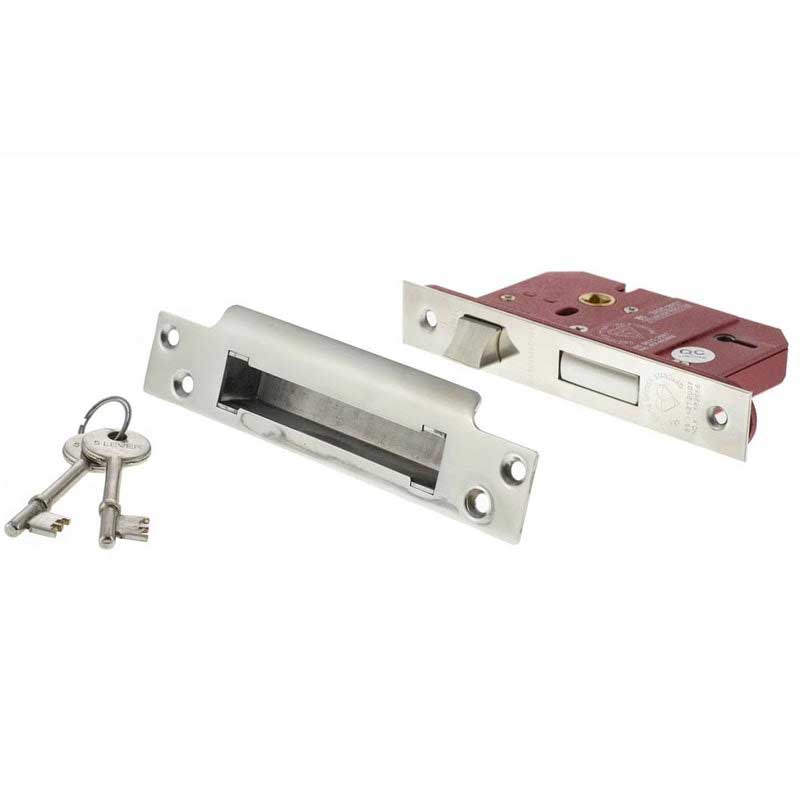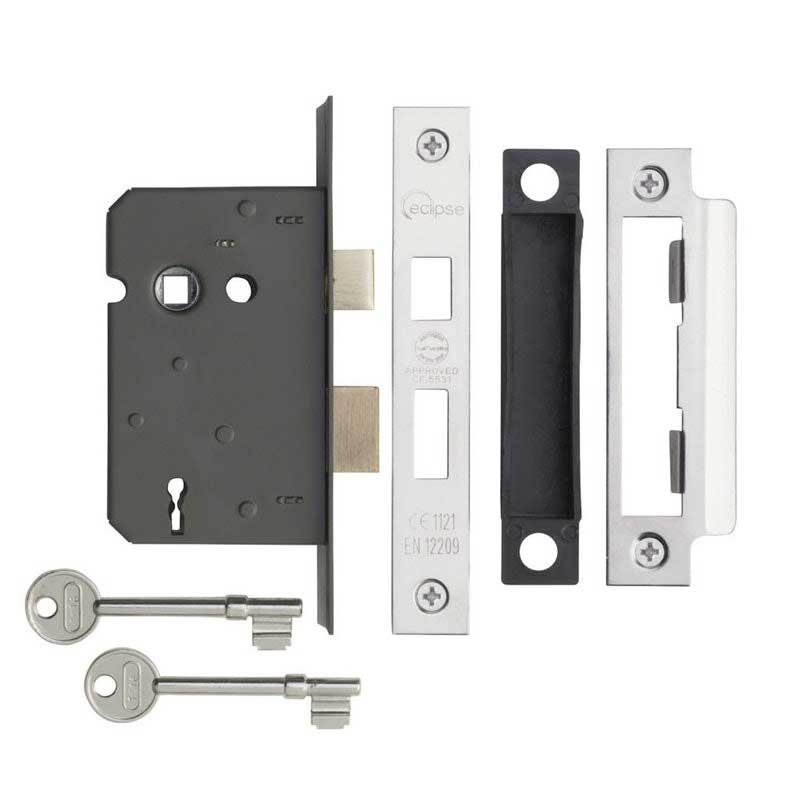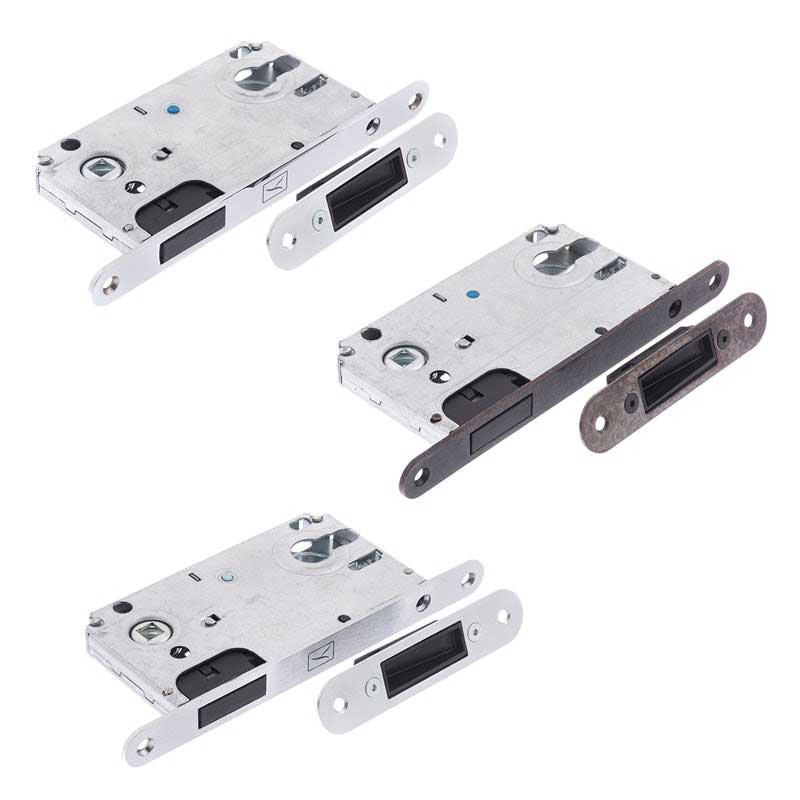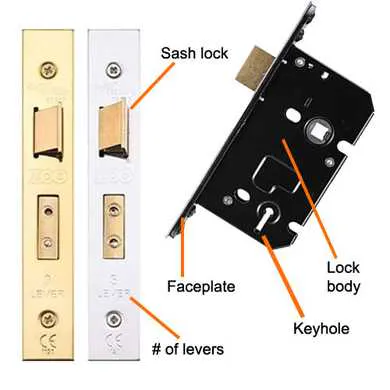Sash locks, also known as mortice sash locks, use a combined mechanism of a deadbolt, latch and handle mechanism. A sash lock is also one of the most common styles of lever lock used on interior and exterior doors, usually fitted within the material of the door.
But what is a sash lock, and how does it function?
There are different levers available when it comes to sash locks. 5 lever sash lock and 3 lever sash lock are the most favourable, with the British Standard being 5 lever sash locks as they are the most secure option.
Find out more below!
Table of contents
- How does a sash lock work?
- Choosing the right sash lock for you
- Types of sash lock
- How to replace a mortice sash lock
How does a sash lock work?
Sash locks have a non-locking sprung latch built into the system and are designed to work with handles on either side of the door. Sash lock door handles, once installed, can be locked and unlocked from both sides of the door thanks to the deadbolt. The deadbolt operates via turning a key but isn’t always needed every time as the non-sprung latch can ensure the door stays closed when unlocked and sitting in the frame.
What is the difference between a sash lock and a deadlock?
Unlike sash locks, deadlocks do not have latches. This means it only has the key operating deadbolt and will lock the door after it is closed, but not stay closed when unlocked. You can find out more about deadlocks via our guide to types of door locks.
Choosing the right sash lock for you
As stated, there are two commonly used types of sash lock lever types. How to pick a sash lock will determine the level of security needed and the desired location. Having said this, if you are not familiar with the legalities surrounding lock standards and recommendations, please speak to a professional to help you find the right locks for your property and/or help you deal with any lock-related issues. You can also find out more about lock standards via Approved Document Q.
British standard 5 lever sash lock
Not to be confused with the standard 5 lever sash lock, British standard 5 lever sash locks are the most secure option as they have hardened steel anti-drill plates, anti-saw bolts and more for maximum security. They are favoured by insurance companies and recommended (in some cases, required) by them as they are certified by British Standard BS3621 which is a rating given to thief-resistant locks.
To make sure your 5 lever lock conforms to these standards, you can look for the BSI kitemark which can typically be found engraved onto the product. They can also be found with the BS number to identify the number for the British Standard.

5 lever sash lock
A 5 lever sash lock is different to the British Standard as it typically consists of smaller bolts and no anti-drill facilities despite having 5 levers. Having said this, they are still recommended to offer the minimum level of security. Especially when it comes to choosing a lock for your external door.

3 lever sash lock
3 lever sash locks are useful for internal doors where privacy may be a requirement, but security is not essential. This could be anything from bedrooms to bathrooms and other locations around the domestic property where applicable. The fewer levers mean that duplicating a key is easier.

2 lever sash lock
The 2 lever sash lock offers the simplest form of security. More common for internal door use where privacy is wanted.
What size sash lock do I need?
Sash lock sizes will depend on the thickness of your door and where you want to fit the handle. Case depth is also a common main concern when it comes to sash lock size, with the two most common being 64mm (2.5 inches) and 76mm (3 inches) for 3 and 5 lever sash locks. Having said that, when using 5 lever locks on external doors, you will also need to consider the backset measurement from the edge of the door to the centre of the door handle.
Types of sash lock
There are different styles of profiles for sash locks, with 5 lever mortice sash locks being a common style and favoured by many for their discrete appearance. Here is a brief overview of the different types of sash locks.
What is a mortice sash lock?
A mortice profile sash lock is a common style of lock. It can sit comfortably within the edge of the door in a ‘pocket’ for a more subtle lock design.
What is a Euro sash lock?
The Euro profile sash lock is a popular type of lock. Single pieces of metal connect both sides of the lock and only one side of the lock can be used at any one time. A Euro profile cylinder lock also requires a wider keyhole.

What is a rim sash lock?
Rim profile sash locks are locks that attach to the surface/face of a door, not set into the edge of the door like that of a mortice lock, with the latch attached to the edge of the door frame. They are typically a lock of choice because they can be installed easily in place.
What is a bathroom sash lock?
As the name suggests, bathroom sash locks are designed for privacy rather than security. They tend to incorporate thumb turn locks with handles or doorknobs and can be opened with a coin release in an emergency.
How to replace a mortice sash lock
Changing or replacing a door lock, whether due to damage, a move to a new home or design wants, can be done with guidance. You can find out how via our guide on how to change door locks. If you’re not sure, contact a professional.
Want to know more about sash locks or other different types of door furniture? Contact our friendly customer service team using the helpline or live chat on your screen for support.












